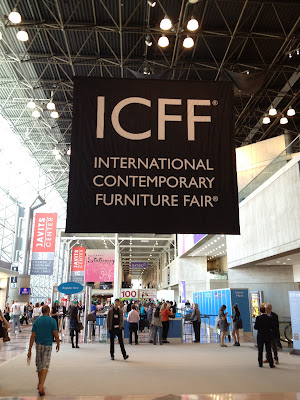Only
10 blocks south of my apartment, I recently went to the 26th Street,
ground zero for what would become the West Chelsea art district. Mary Jones has had a lovely, light-filled atelier in the Greene-Naftali building for years.
I
first saw the paintings of Mary Jones nearly 30 years ago in Los Angeles, when
I was a student and she herself was not too far removed from school. Her work then was an original amalgam of
various tendencies within the dialogue of painting in the late 70s and early
80s with elements of P&D, New
Image, and even Neo-Ex. But it was all put through her cool,
deliberate painting style and the results were some of the best painting around
in those days.
By
the end of the 80s she had moved to New York and she had emptied her paintings
of representational elements but retained her regularized hard-edged
non-painterly facture. It was not
long after that that she started to move into the territory of a much looser
gestural abstraction. She
described this change as becoming consumed by the under-painting of her
previous canvases.
The
preoccupation with developing new possibilities for gestural abstraction has
concerned her since. Her paintings
have been exhibited in New York in many solo and group exhibitions and having
seen nearly all of her shows, the paintings I saw a couple of days ago in her
studio are among the best paintings she has ever created and a brilliant new
direction for her work.
These
paintings seem to synthesize all of her concerns for the past decades into her
most complete and varied paintings.
They are her most muscular paintings with form and mass dominating where
once thin washes of paint predominated.
Her introduction a few years ago of spray paint is now incorporated seamlessly
and some of the schematic ghosts from her earliest work have reappeared.
Despite
the fact that these paintings contain more traditional figure/ground
relationships, color continues to play an important role. The newest paintings have large
swaths of paint applied with a roller, but not so much rolled as troweled. Upon
seeing one where pink predominated, I asked her if the deKooning show had been
an inspiration and indeed it had been she replied. The paintings look nothing like deKooning’s but the
confidence and depth of the paintings recall late deKooning.
With
a few more paintings of this size or larger (the ones I saw were 6’ x 5’ ft)
and equal in quality, Mary Jones will surely have one
killer show of new paintings. I can’t wait to see that exhibition.
 |
| A new work on paper |
 |
| A small painting from 2010 |



























